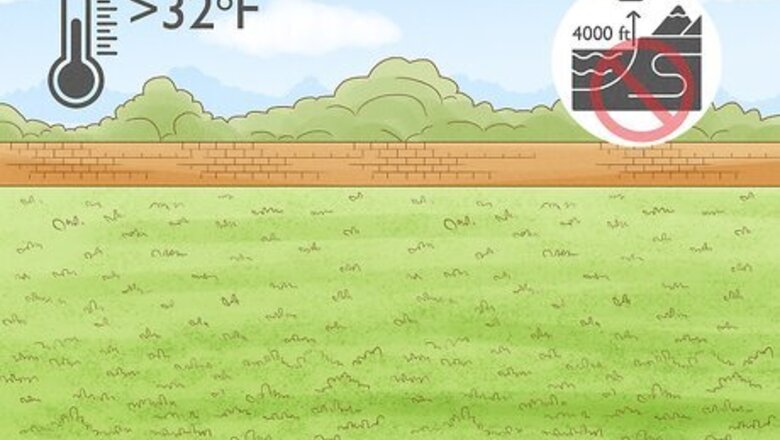
views
Germinating the Jackfruit Seed
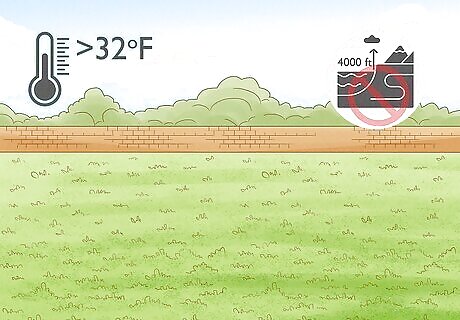
Consider whether you have the appropriate space and environment for a jackfruit tree. Before you buy jackfruit seeds, think about whether you have the room in your garden for the world’s largest fruit. Jackfruit trees can grow up to 100 feet (30m) tall and thrive in humid, low-lying areas.While the jackfruit tree has adapted to a range of climates, young trees will likely be killed in temperatures below 32 °F (0 °C). Jackfruit trees are not viable at 4000 feet above sea level or higher, and they do not survive well in areas of high or sustained wind. The jackfruit tree is too large to make a suitable container plant, so must be planted outdoors.
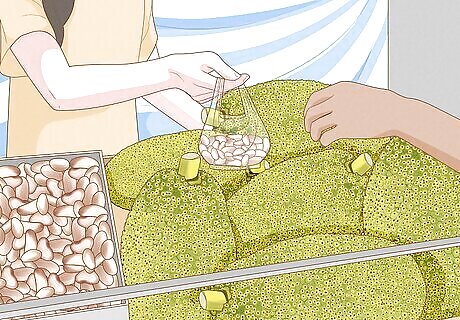
Purchase jackfruit seeds from a local Asian market or specialized gardening store. Many Asian or ethnic markets sell jackfruit seeds. If your local store doesn’t have any, you can purchase seeds online. It is possible to harvest jackfruit seeds from a fully ripe jackfruit. If your local grocery or fruit market sells jackfruit, you can remove the seeds from the pulp and then rinse the seeds in warm water to remove any stickiness. If you purchase jackfruit seeds online, try to buy them from a reputable organic gardening vendor – jackfruit seeds are only viable for around 4 weeks, so you need to be careful who and where you buy them from. Also consider how long the shipping will take. Make sure to buy numerous jackfruit seeds, as you will be germinating multiple.

Soak the jackfruit seeds in water for 24 hours. Soak the seeds to speed up the germination process and to help your seedlings to grow faster. Place the seeds in a small container with lukewarm water and let them soak for at least a full day.
Growing Your Jackfruit Seedling
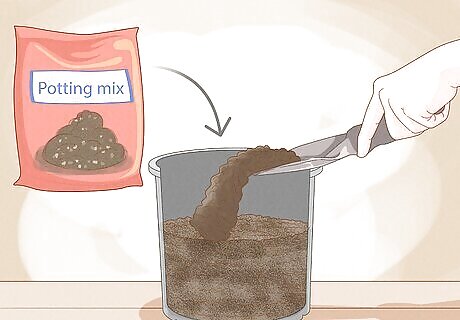
Fill your seedling pot with organic potting mix. Use a plastic pot with drainage holes so that water can easily flow out into the ground. Fill the pot with a rich absorbent potting soil, preferably one with a combination of sand, perlite and organic compost. The ideal soil will be light and fast-draining. When using potting mix, always wear gardening gloves and ensure you are working in a well-ventilated area. Premixed potting soil can be purchased at gardening stores, online, or you can make your own organic soil.
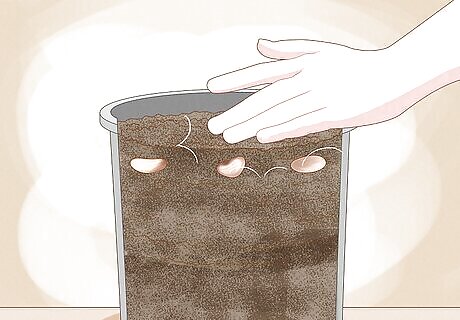
Sow at least 3 seeds into the prepared pot. Sow the seeds by spacing them evenly near the center of the pot. Cover the seeds and tap down lightly to compact the topsoil. You need to plant at least 3 seeds in case one or more of the seeds is not viable. You can plant more seeds in the pot, but consider that the more seeds you plant, the more will be competing for resources.
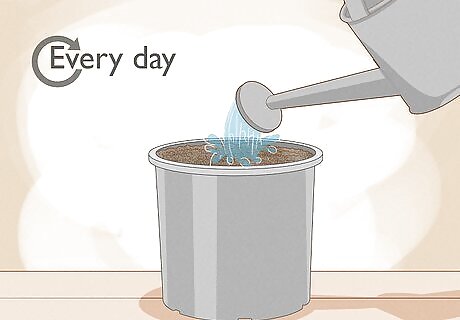
Water the seeds. After planting, water the seeds to help them settle into the soil. Continue to water the seeds every day, making sure that the soil is moist but not saturated. Too much water can cause the jackfruit seeds to rot, so be careful not to overwater. To see whether your seeds need watering, place your finger into the soil (up to the first knuckle). If it isn’t wet, water the seeds.

Keep the potted seeds in a warm and sunny environment. Keep your pot outdoors in a sheltered, warm and sunny place. If the weather is too cold or windy, place the pot indoors in a sunny spot, like a windowsill. Jackfruit seeds will germinate well in a humid environment such as a greenhouse. If this is not possible and the weather outside is too cool, an indoor heat lamp is an alternative option to keep your seeds growing healthily.
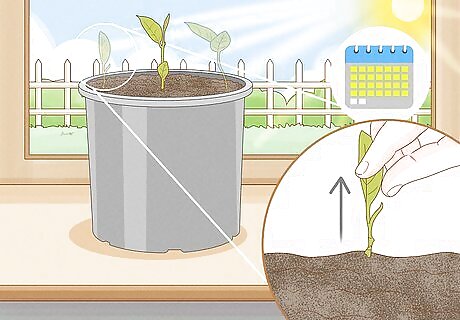
Choose the healthiest seedling to nourish after they’ve started germinating. It will take 3 to 4 weeks for your seedlings to germinate. Choose the seedling that has grown the tallest, looks the strongest and has healthy green leaves. Remove the remaining seedlings by gently pulling them out of the soil. Avoid using seedlings that look weak, spindly or have grown near the edge of the pot. A seedling that has grown in the middle of the pot will have a more fully developed root system.
Transplanting Your Jackfruit Tree
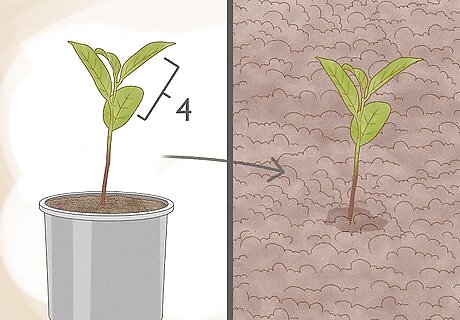
Transplant the young jackfruit plant once it has gained four leaves. Healthy leaves will look large, green, have no ridges, and will be much bigger than the seedling leaves. Jackfruit seedlings can be sensitive and do not like to be disturbed. Make sure the seedling looks strong enough before considering transplanting it.
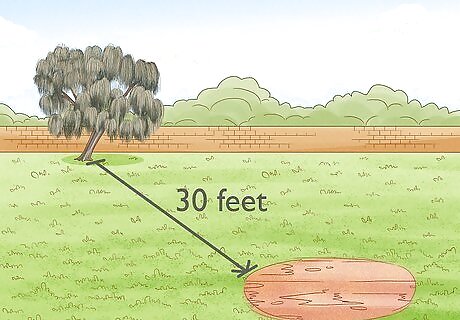
Choose a spacious, sunny, and sheltered area away from other trees. Find an area at least 30 feet (9.1m) away from other trees to place the jackfruit plant. Since Jackfruit trees can grow up to 100 feet (30m) tall if left alone, the tree will need a big open space that receives full sun. Avoid planting the tree near your house since the roots will grow out and could cause damage. Find an area that is sheltered from strong wind so that your tree can develop safely.

Clear the surrounding area of roots and weeds. Once you have chosen your spot for the jackfruit tree, clear any surrounding weeds and debris. Be sure to remove any tree stumps and old roots to avoid potential root disease in your jackfruit plant. If necessary, you may need to plough the soil first to ensure it is soft and fertile.
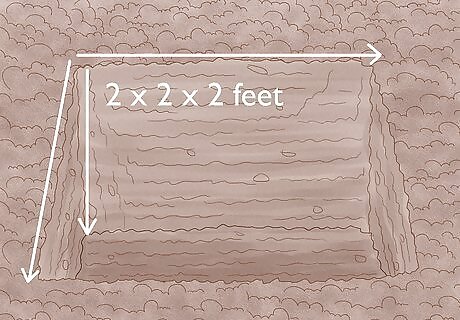
Dig a hole for your jackfruit plant. Use a shovel to dig a hole 2 x 2 x 2 feet (0.61 x 0.61 x 0.61 meters) deep for your tree. This hole can be square or circular. To check if the soil is well-draining, check to see whether it has any sand or clay. If it does not, you can make your soil drain better by mixing in sand or compost. To give your jackfruit a boost start with natural nutrients, add compost to the soil.
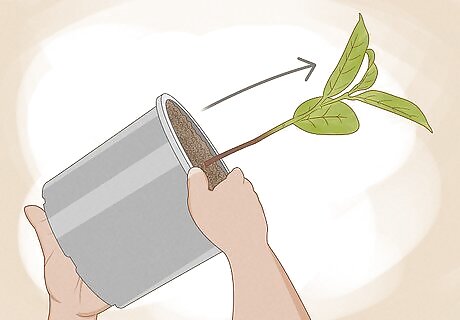
Remove the plant gently from the pot. Place one hand around the base of the jackfruit plant, on top of the potted soil. With your other hand, tip the pot over so that the plant and soil slide out together. You may need to twist the plant gently or tap the pot to loosen the soil from the edges. Try not to pull the plant out, as it may rip out part of its root system. If the roots have wrapped around the dirt to match the shape of the pot, use your fingers to gently tease the roots so that they are facing outwards. This will help them grow down into the surrounding soil.
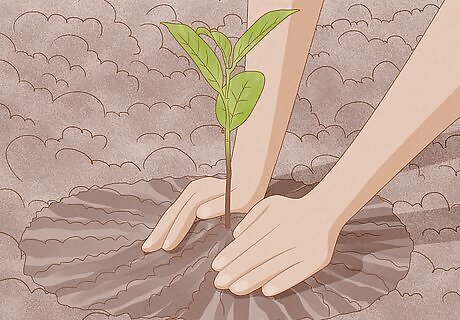
Place the plant in the hole and create a mound around the base. You don’t want to bury the jackfruit itself, so if your hole is too deep, scoop a few handfuls of dirt in to give it a base. Then carefully pat in loose dirt around the roots until the hole is filled. Form a mound around the base of the plant so that the water can run off into the soil. Pat the soil so that it is solid, but be careful not to pack the soil in too tightly. Water the plant immediately. Thoroughly water the jackfruit plant to help it recover and get established in its new surroundings.
Looking After Your Jackfruit Tree
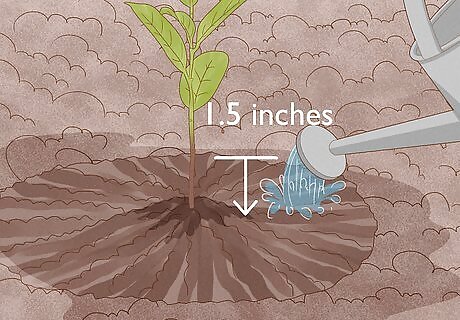
Water your jackfruit tree every day, but be careful not to over-water. Young jackfruit trees need water every day so that their roots can establish. You can use a garden hose or a watering can to water the tree at its base. In order to avoid overwatering, make sure the soil is damp 1.5 inches (3.8cm) deep, but no more. Jackfruit trees are sensitive to drought, so if your area is particularly dry, water your tree twice a day. Water your jackfruit even in winter. Jackfruit do not have a natural winter dormancy, so you need to keep the plant’s growing conditions warm, bright and humid.

Feed your young jackfruit fertilizer every six months. Young jackfruit trees need fertilizer to grow and thrive. Use 30 grams of a fertilizer with nitrogen, phosphorus, potassium and magnesium applied in a ratio of 8:4:2:1. Every 6 months for the first 2 years, double the amount of fertilizer you use with the same mix. Once your tree is 2 years old, growing jackfruit trees should receive 1 kilogram (2.2 lb) of a fertilizer with a 4:2:4:1 ratio.

Protect the plant by removing weeds and using an organic pesticide. Weeds can absorb essential soil nutrients, so pull them out before they grow too numerous. Spray the tree with an organic pesticide to deter the any harmful bugs, such as the jackfruit borer. If you can, pull weeds out by hand to avoid using chemicals that could damage your tree. You can purchase a natural pesticide from your local gardening store or make your own. To save your jackfruit from fruit flies and birds, cover the growing fruit with paper bags or netting.
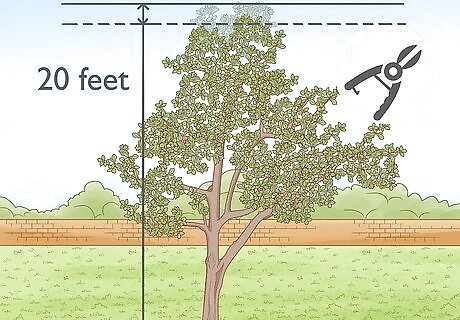
Prune the jackfruit tree regularly to keep it below 20 feet (6.1 m). To prevent your jackfruit tree from growing so tall that it produces fruit out of reach, use a pair of hand shears to trim the tree back to a controllable size. When the tree grows above 12 feet (3.7 m), reduce the height by 4 feet to encourage outward growth. Remove any dead wood to keep the tree in good health. While the tree is still growing, pinch off any flowers that the plant produces to help promote growth.
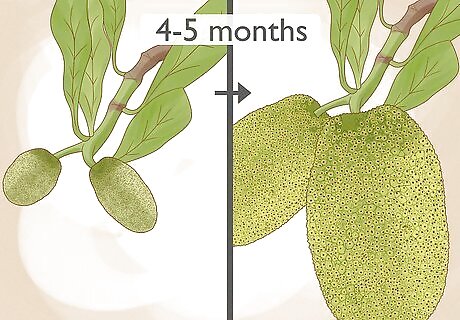
Pick the jackfruit after 3 to 4 years. All going well, after the third or fourth year your tree will begin developing edible fruit. It will take another 4 to 5 months (potentially up to 8 months) for the young fruit to ripen. Pick the fruit once they have a yellow tinge and possess a sweet smelling odor. Ripe jackfruit can be eaten alone or in recipes. The pulp of the fruit smells sweet, like a mixture of pineapple and banana. Unripe fruit can be picked to be used as a meat substitute after 2 to 3 months. Shredded young jackfruit, when seasoned and cooked properly, is reminiscent of pulled pork. In native conditions the tree will bear fruit year-round, but peak harvest season is in the summer.



















Comments
0 comment